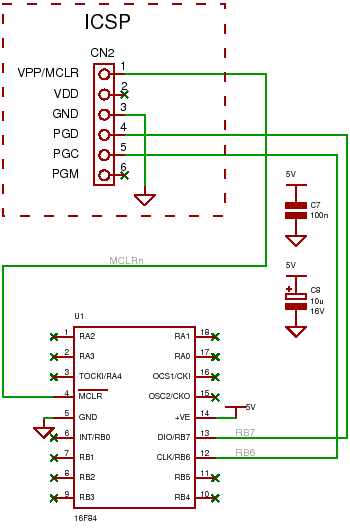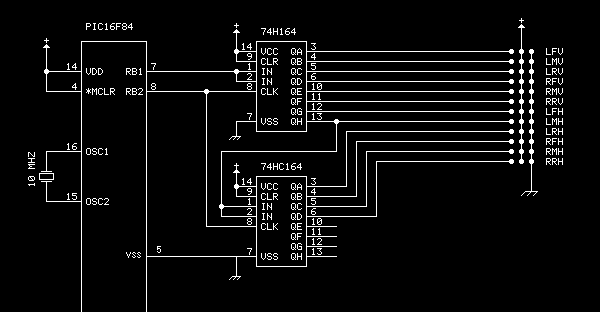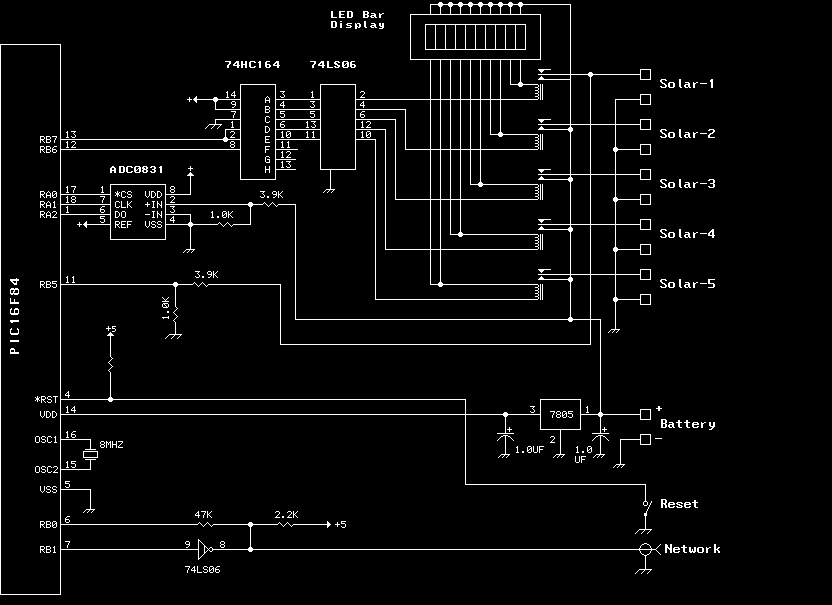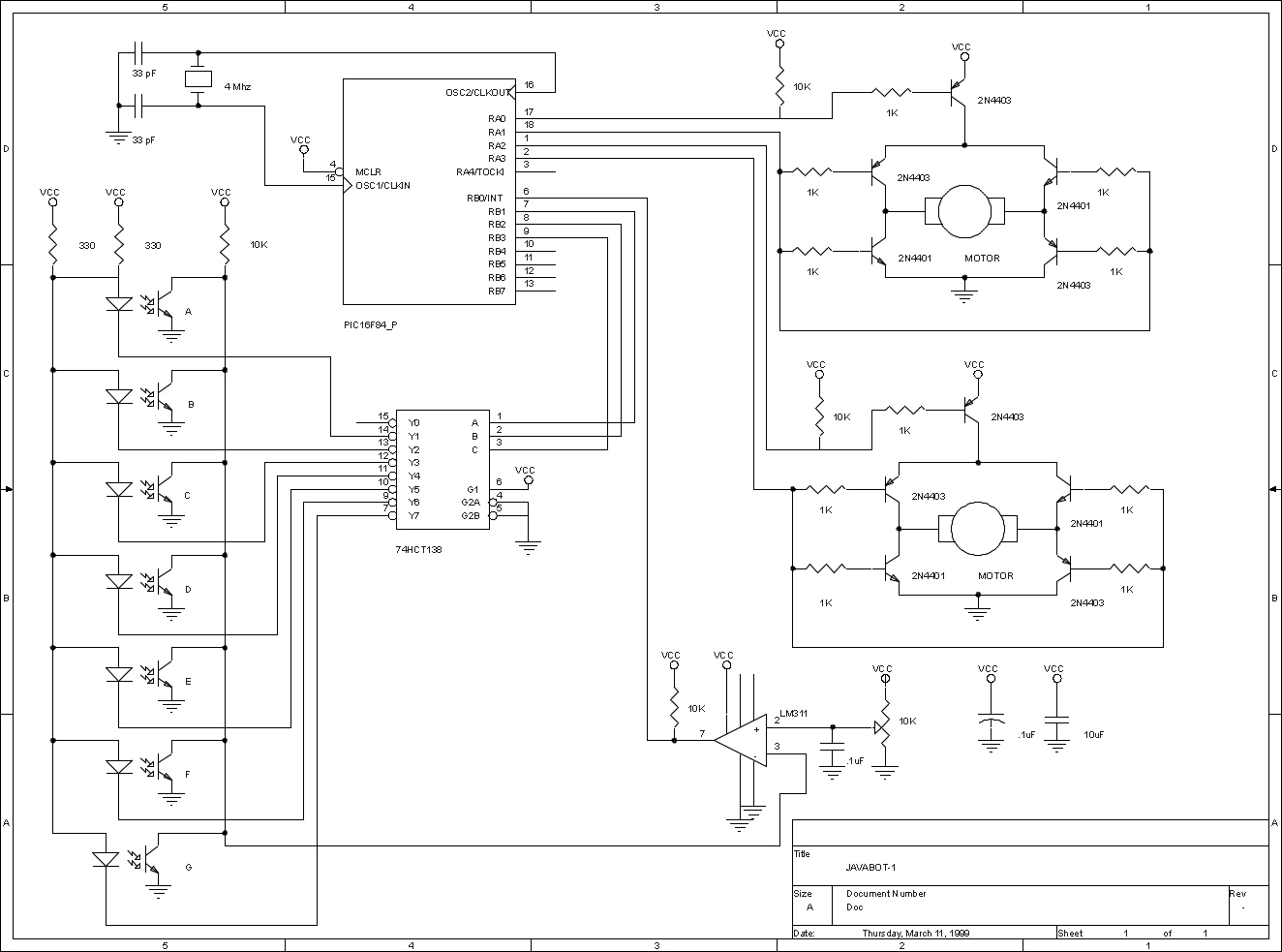
pic16f84

An introduction to the PIC16F84 microcontroller, including connections for an ICSP programmer and a circuit example.
The PIC16F84 is an 8-bit microcontroller from Microchip Technology, widely utilized in various embedded applications due to its versatility and ease of use. It features a 14-bit instruction set architecture and is equipped with 1 KB of program memory and 64 bytes of RAM. The microcontroller operates at a maximum clock speed of 20 MHz, making it suitable for a range of timing-critical applications.
The ICSP (In-Circuit Serial Programming) interface allows for easy programming of the PIC16F84 while it is installed in the circuit. This feature is particularly advantageous for development and debugging, as it eliminates the need to remove the microcontroller from the circuit board for reprogramming.
The typical connection setup for the ICSP programmer involves the following pins: Vpp (Programming Voltage), Vdd (Power Supply), Vss (Ground), and the data lines for programming, which are usually MCLR (Master Clear), PGD (Program Data), and PGC (Program Clock). The MCLR pin is used to reset the microcontroller, while PGD and PGC facilitate data transfer during the programming process.
In a practical circuit example, the PIC16F84 can be connected to various peripheral devices such as LEDs, switches, and sensors. A basic circuit might include a power supply connected to the Vdd and Vss pins, with an LED connected to one of the I/O pins. The ICSP programmer would connect to the appropriate programming pins to enable firmware updates and debugging.
The schematic representation of the circuit will typically include the microcontroller, the ICSP connections, and any additional components required for the specific application. Proper layout and routing of the connections are essential to ensure reliable operation and to minimize interference, especially in high-frequency applications.A PIC16F84 introduction with ICSP programmer connection and circuit example.. 🔗 External reference
The PIC16F84 is an 8-bit microcontroller from Microchip Technology, widely utilized in various embedded applications due to its versatility and ease of use. It features a 14-bit instruction set architecture and is equipped with 1 KB of program memory and 64 bytes of RAM. The microcontroller operates at a maximum clock speed of 20 MHz, making it suitable for a range of timing-critical applications.
The ICSP (In-Circuit Serial Programming) interface allows for easy programming of the PIC16F84 while it is installed in the circuit. This feature is particularly advantageous for development and debugging, as it eliminates the need to remove the microcontroller from the circuit board for reprogramming.
The typical connection setup for the ICSP programmer involves the following pins: Vpp (Programming Voltage), Vdd (Power Supply), Vss (Ground), and the data lines for programming, which are usually MCLR (Master Clear), PGD (Program Data), and PGC (Program Clock). The MCLR pin is used to reset the microcontroller, while PGD and PGC facilitate data transfer during the programming process.
In a practical circuit example, the PIC16F84 can be connected to various peripheral devices such as LEDs, switches, and sensors. A basic circuit might include a power supply connected to the Vdd and Vss pins, with an LED connected to one of the I/O pins. The ICSP programmer would connect to the appropriate programming pins to enable firmware updates and debugging.
The schematic representation of the circuit will typically include the microcontroller, the ICSP connections, and any additional components required for the specific application. Proper layout and routing of the connections are essential to ensure reliable operation and to minimize interference, especially in high-frequency applications.A PIC16F84 introduction with ICSP programmer connection and circuit example.. 🔗 External reference





